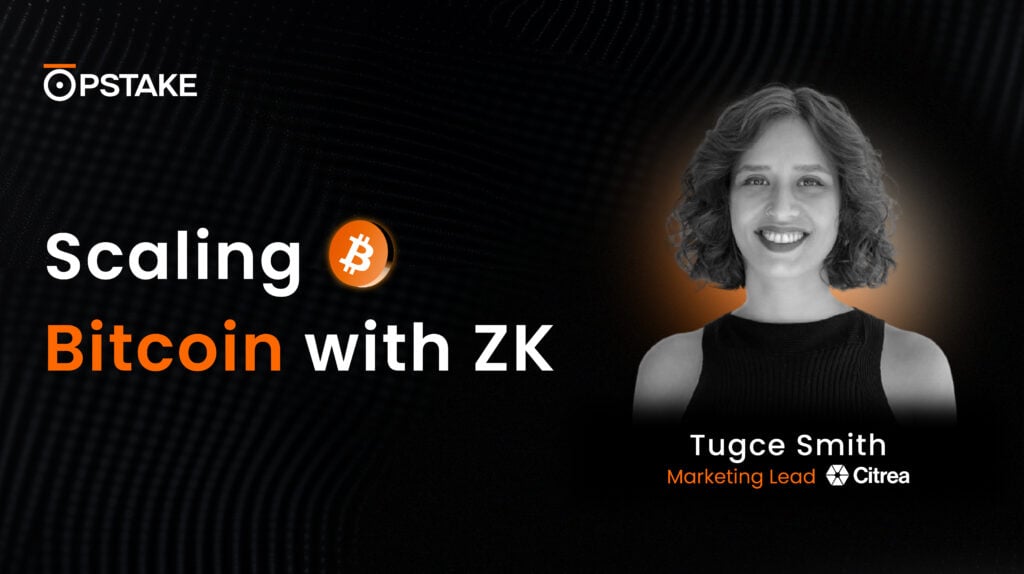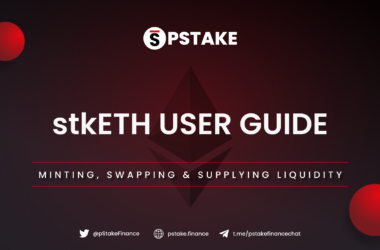pSTAKE has laid the foundation for the infrastructure and development for the upcoming launch of our ATOM liquid staking solution on the Persistence Core-1 chain. Exciting things are ahead in Q4 2022 as our team looks forward to bringing our innovative product to the masses.
Upon finalization of the security audit reports, we’ll soon launch liquid staking for The Internet of Blockchains.
To better grasp the next steps and what users can expect, let’s look at some key development updates.
ATOM Liquid Staking
pSTAKE will launch a non-custodial ATOM liquid staking solution on the Persistence Core-1 chain, bringing stkATOM directly into the Cosmos ecosystem. Through Interchain Accounts (ICA), our protocol will allow users to stake their ATOM and mint stkATOM based on the exchange rate (i.e. current c-Value, following Compound Finance’s cToken model).
The value of stkATOM will increase against ATOM as it accrues staking rewards in the background. pSTAKE automatically compounds ATOM staking rewards after every epoch, resulting in higher yields.
*stkATOM is a transferable Persistence-native SDK coin that is IBC (Inter-Blockchain Communication) compatible and liquid – therefore, the token can be used across the Cosmos ecosystem to earn additional yield.
Background Mechanics
To better understand the mechanisms that allow this product to function the way it does, let’s cover the details of what happens in the background.
ICA enable pSTAKE to be a completely non-custodial liquid-staking solution for ATOM. Using ICA, the Persistence Core-1 chain (as a controller chain) will register an account on the Host chain (Cosmos Hub) – this will open a dedicated IBC channel between the two chains, allowing the IBC module on the Persistence Core-1 chain to execute native actions (such as staking and unstaking) on Cosmos Hub through an event-driven architecture enabled by relayers between the two chains.
The transaction is then relayed to the Cosmos Hub chain and executed as if it were a local transaction. ICQ allows the requesting chain (Persistence Core-1 chain) to query the accrued staking rewards data from the target chain (Cosmos Hub). Next, by using ICA, the auto-compounding of staking rewards will take place on the user’s behalf in a non-custodial manner. The value of your stkATOM will continue to increase against ATOM as it accrues staking rewards in the background.
When a user unstakes their stkATOM, the ICA will complete the unstaking transaction of undelegating ATOM from the host chain. Users will be able to claim underlying ATOM and their respective accrued staking rewards after the 21-25 day unbonding period concludes. Throughout this unbonding period, users will not receive staking rewards.
However, if a user wishes to exit their staking position, they can do so at any time by swapping their stkATOM for ATOM or another asset in supported liquidity pools.
Product Development Insights
Below are insights into key product development items for stkATOM:
Instant Redemption
To accelerate the timeline for users to redeem their tokens, pSTAKE is creating an innovative mechanism for instantly redeeming ATOM for stkATOM without waiting for the unstaking period to end – this will allow users to seamlessly unstake. If enough redeemable tokens are available within the daily deposit pool, users will be able to claim underlying ATOM (and associated staking rewards) equivalent to the cValue, instantly avoiding risks associated with volatile price swings during the unbonding period.
Security Measures
The code for our stkATOM product has already been delivered to Halborn, one of the industry’s top blockchain security firms, for them to begin their security audit. We’re working closely with them to document and resolve any bugs and fixes to ensure our pSTAKE’s ATOM liquid staking solution is as robust and smooth as possible.
After the stkATOM mainnet launch, our team also plans to undergo additional security audits with leading blockchain firms, bug bounty campaigns, and on-chain monitoring initiatives, staying true to our commitment to achieving the highest security possible.
Internal Testnet
pSTAKE has always taken a security-first approach. In addition to detailed audits and other key security measures, our internal stkATOM testnet has been live for quite some time and is now in its final stages, as the team is stress-testing all edge cases to ensure we’re prepared for a smooth and seamless mainnet launch.
Protocol-to-Protocol Level Integration
Our team has focused heavily on building a robust User Experience and Developer Experience for integrations and utilities with pSTAKE.
Persistence is powering an ecosystem of DeFi applications focused on unlocking the liquidity of staked assets, aiming to offer seamless and rewarding staking and DeFi experiences for PoS token holders. With CosmWasm support enabled, developers can now build dApps and enable multiple use-cases for liquid staked assets on the Persistence Core-1 chain. Some of these products are currently being built and expected to be launched in Q4 2022.
Our implementation for pSTAKE is module-based, where other dApps (decentralised applications) will live as CosmWasm contracts on the Persistence Core-1 chain. Therefore, it’s crucial for us to allow these contracts to call certain functions and directly interact with the stkATOM module on Persistence. This will result in easier protocol-to-protocol level integration, thereby improving our UX and allowing dApps to be built on Persistence, allowing us to scale towards more advanced use cases.
Integrations and Liquidity Bootstrapping
Liquid staking lies at the heart of ATOM 2.0 and sufficient liquidity is highly crucial to achieving the goal of making liquid-staked assets the base assets of the broader Cosmos economy. Therefore, bootstrapping liquidity will be a core priority when it comes to stkATOM; upon launch, we’re considering potential integrations with Cosmos’ top dApps, including but not limited to liquidity pools on DEXs, such as Osmosis, Crescent, collateral for USK on Kujira, and integrations with Persistence’s DeFi primitives (an interchain DEX, money market, and more).
Token Model
stkASSETs work on an exchange rate model. For example, stkATOM’s exchange rate is the rate that defines how many tokens are minted when a user stakes their ATOM or how much ATOM is claimable when a user unstakes stkATOM. In essence, it establishes a direct conversion relation of ATOM to stkATOM.
An stkASSET’s exchange rate is identical to Compound Finance’s cToken model, which is calculated by taking the total supply of stkATOM divided by the sum of tokens the pSTAKE protocol received in the deposit account balance (all staked ATOM, including auto-compounded staking rewards).
Theoretically, the result should always be <= 1, except in an extreme slashing situation, which would result in the staked amount (the denominator) being reduced. The stkATOM exchange rate changes (increases) when the pSTAKE protocol receives ATOM staking rewards every epoch.
Hence, stkATOM in the (n+1)’th epoch will be worth more in terms of ATOM than in the n’th epoch. This model enhances the overall user experience, eliminating the need for users to manually claim rewards.
Validator Selection
Our goal is to enable pSTAKE users to earn high staking rewards without sacrificing security. The initial set of validators will be selected by our team based on a unique scoring mechanism that will take several factors into account, such as APR, slashing history, uptime, voting participation, and commission rate. This validator set will include top validators and smaller ones with a high potential to build and maintain the ecosystem in the long run, further promoting decentralisation.
In the future, our validator set will be governed by the pSTAKE community. We also believe it will be ideal for PSTAKE token holders to be aligned with Cosmos Hub and ATOM holders – to achieve this, greater community involvement will be critical.
More details on the exact validator delegation and mechanism will be provided.
From here on out, users will no longer need to hop between different chains – the experience will be enabled under one umbrella.
About pSTAKE
pSTAKE is a liquid staking protocol that unlocks liquidity for your staked assets. With pSTAKE, you can securely stake your Proof-of-Stake (PoS) assets, participate in protocol improvements and security to earn staking rewards, and receive staked underlying representative tokens (stkASSETs) which can be used to explore additional yield opportunities across DeFi.
At present, pSTAKE supports Binance Chain (BNB), Cosmos (ATOM), Persistence (XPRT), and Ethereum (ETH) networks’ native tokens, with a view to support more chains and assets in the future (SOL and AVAX).
Developed by Persistence
Persistence is a Tendermint-based, specialised Layer-1 network powering an ecosystem of DeFi applications focused on unlocking the liquidity of staked assets. Persistence facilitates the issuance and deployment of liquid-staked stkASSETs, allowing users to earn staking rewards while participating in DeFi primitives, such as lending/borrowing and liquidity provisioning on DEXs.
Persistence aims to offer a seamless staking and DeFi experience for PoS (Proof-of-Stake) users and enable developers to build innovative applications around stkASSETs.
Join Our Movement
Twitter | LinkedIn | Telegram | YouTube | Reddit | [email protected]









